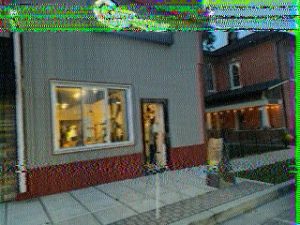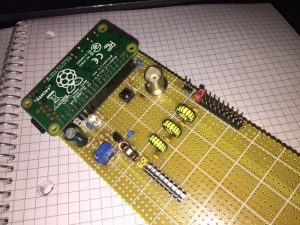An amateur radio mode called Slow Scan TV (SSTV), given the speed of transmission, is really more about sending pictures than sending video. I’m guessing the name came from it’s similarity to how television video used to work.
I’ve used slow scan to receive images transmitted from the International Space Station as it passes overhead, which has been covered in a previous blog posting. At that time we recorded the transmitted ‘image’ using a voice recording app on a cell phone, emailed the image to a computer, and then used MMSTV to turn the recorded sound into an image. A more permanent/perhaps better setup would be using an interfacing cable to connect the radio directly to a PC with sound input.
Several months ago Ian stumbled across a simple phone app that decodes SSTV images, Robot36. It decodes the image directly on your phone, using the cell phone mic as input. After discovering a similar SSTV encoding app, SSTV Encoder, we realized we could send images directly to each other using our handheld amateur radios.
Of course you should be able to use this setup with walkie talkies, FRS or even GMRS radios. We’ve used it over our local amateur radio repeater for even longer distances, and planning a demo with some of the other local amateur radio operators probably during Field Day in June.
We’ve started a webpage that explains SSTV and some of the software you can use to view it in more detail if you’re interested in trying it/learning more!












